Layouts
Spending a Day with Morris and Franklin
Aug 1, 2007


By Glenn Habrial |
Author
Bio
Come with Glenn as he visits the Franklin Institute's 5 stories of cool inventions, amazing displays and the Morris Arboretum's "Run What You Brung" day.
|
Before I went to the Morris Arboretum I stopped off at the Franklin Institute. There is a massive locomotive there to see. It is the Baldwin three cylinder 4-10-2 Number 60,000. It is the 60,000th locomotive that Baldwin made. This experimental 350 ton (when fully loaded) monster was built in 1926 and tested extensively by the Pennsylvania Railroad. It was eventually put in test service on the Pennsy, Burlington, Southern Pacific, ATSF, Great Northern and others. But because of its weight only the heaviest of rails could support it. In 1926 most railroads were just starting to install heavier tracks. 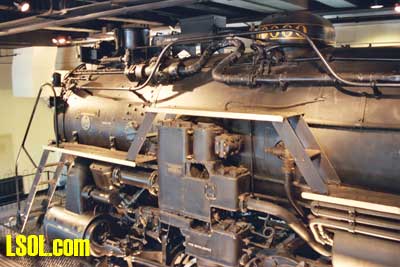
There were many things that hadn't been tried on a locomotive in the United States until this locomotive; one was the coal stoker auger (earliest patent was 1920). Also the firebox did not use stay bolts but had boiler tubes instead. This was used to achieve a boiler pressure of 350 psi. Stay bolts do not survive long at and above 275 psi. The firebox end and boiler water tubes were covered in firebrick. Boiler water tubes were tried in France in 1904. Anyway here is a picture of a picture of that boiler. 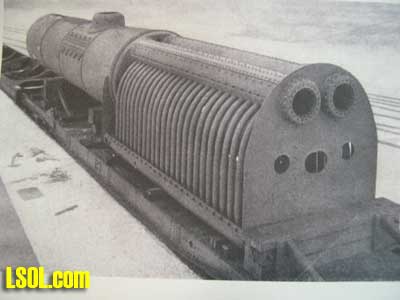 Another thing that was interesting about this locomotive was that the center cylinder was a single high pressure cylinder and the outside cylinders were 2 low pressure cylinders. Because of the new designs, testing proved #60,000 to be about 20 percent more efficient than other steam engines of the day. But because this was a first attempt and there was a resistance for railroads to try new technology, combined with the depression, no three cylinder compound locomotives were sold by Baldwin. (both Alco and Lima built such locomotives, later.)
Other things to see at the museum were the "Rocket," 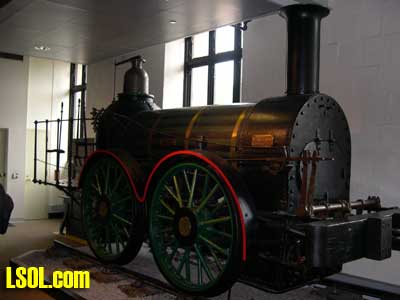 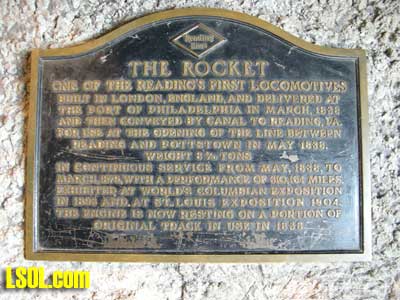 An early 4-4-0 locomotive 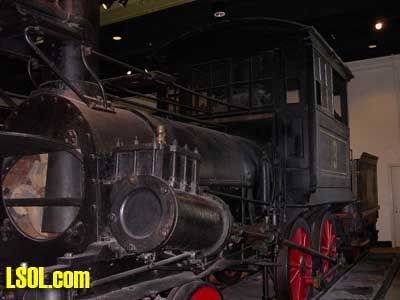 A model of the first Baldwin Locomotive "Old Ironsides" 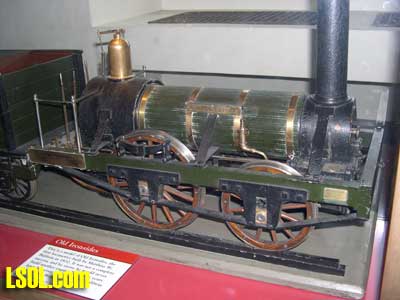
We left the Franklin Institute's 5 stories of cool inventions, amazing displays and screaming kids to go to the Morris Arboretum's thousands of acres of screaming tree huggers. OK they weren't screaming and no wait, it's a yoga class of about 30. OK it was the squirrels and blue jays that were screaming. But there are a bunch of acres of trees. http://www.business-services.upenn.edu/arboretum/ It was Thursday and they are open late on this day of the week. It was a special Thursday because the South Eastern Garden Railway Society was having a "Run What You Brung Day" starting around 6 pm. 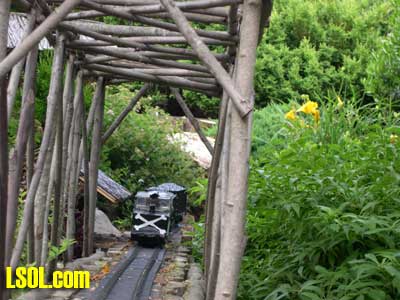 Here is a little shifter locomotive made out of a motor block, milk carton, and duct tape proudly ran. The Garden Railroad is in a small section of the Arboretum about a quarter mile walk from the parking area. It has 12 separate loops of electrified track and maybe one switch track throughout the place. The interesting thing is, from the path one can not see the whole loop of any one of the many loops because of all the plants and scenery. Except for one loop.
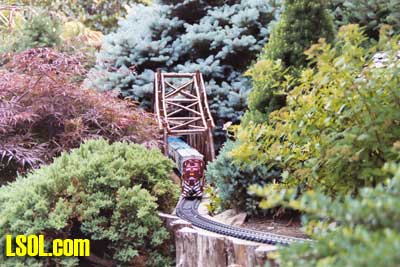 Almost all of the loops have bridges made of natural plant material. Some of the bridges are modeled after existing bridges in the area, and bridges that are gone but not forgotten. See covered RR bridge on right. 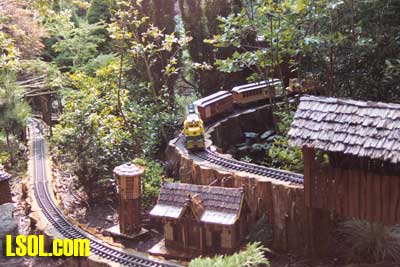 But there was one double tracked bridge that was bigger than the rest and you could walk under it. 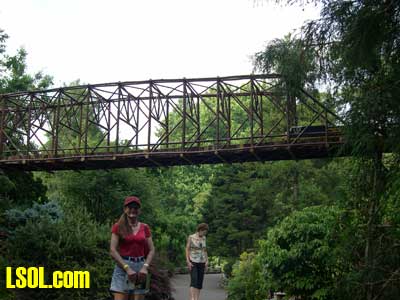
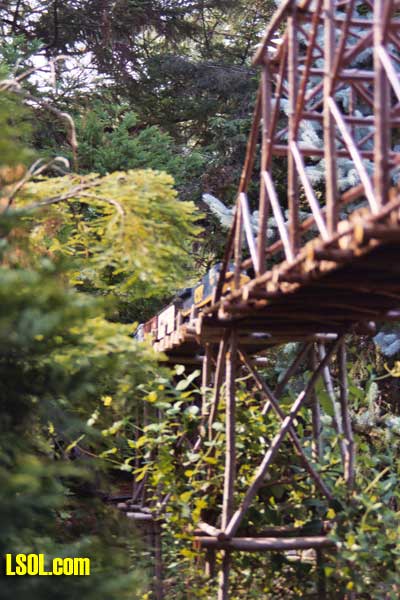 The reversing loop for this bridge was at least 10 feet high. 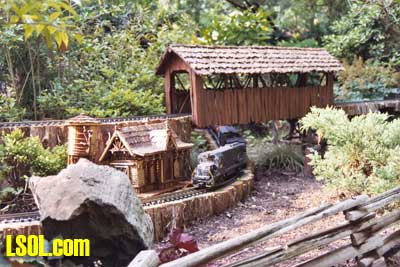 Another amazing thing was all the buildings. All were made of natural substances and had a prototypical counterpart. In a few cases the original buildings were gone and in other cases the exact original building location was not disclosed. As in the case of this barn. 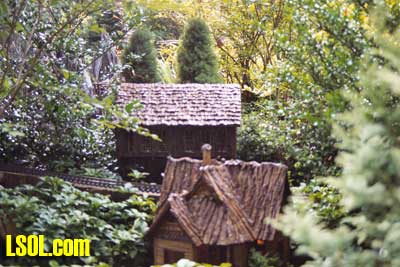
One of the many buildings is the Philadelphia Contributionship built around 1836 located at 212 South 4th Street in Philadelphia. It is where Ben Franklin started his first fire insurance company with all the fire brigades of Philadelphia to insure homes from loss by fire. 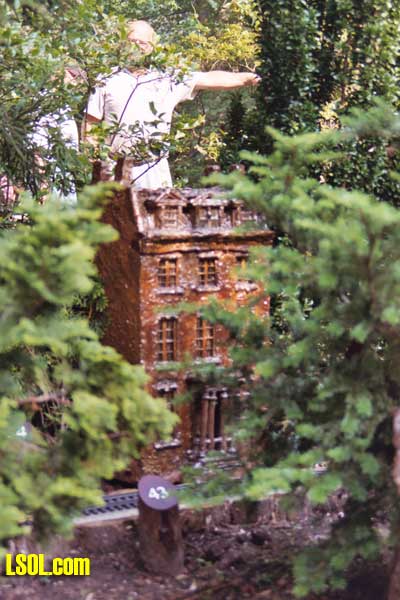 The way I know this is when visiting the railroad everybody can get a booklet that has the number you can see in the picture and that gives a brief history of the house and what the model is made of. Some of the buildings are immediately recognizable. 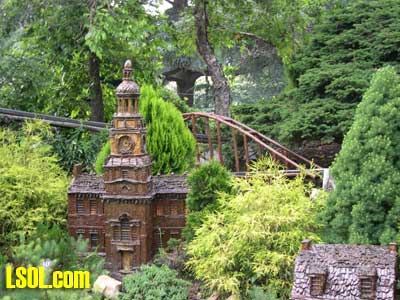
Yet others are just familiar 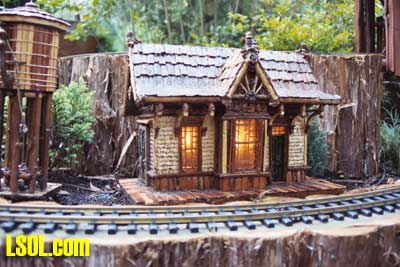 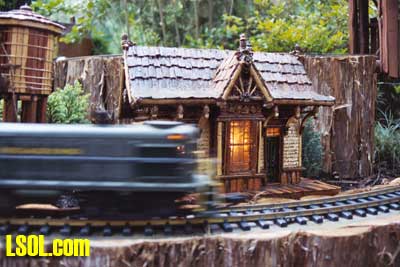
Almost all houses were lit. 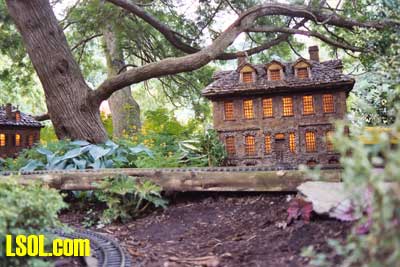 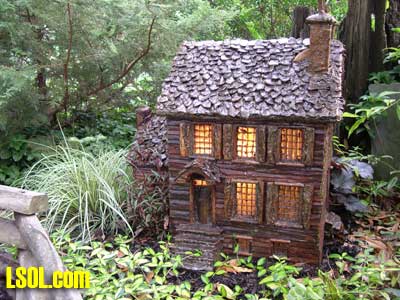 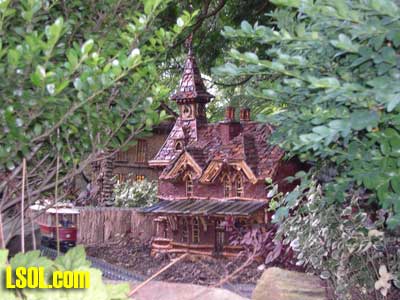
All of the houses had interesting detail. 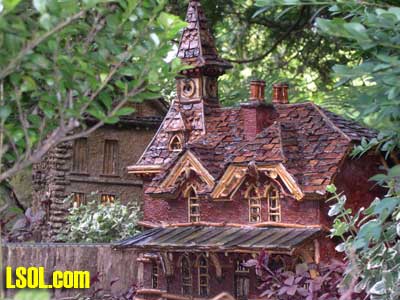 And it was gratifying to see the youngsters interested in trains. 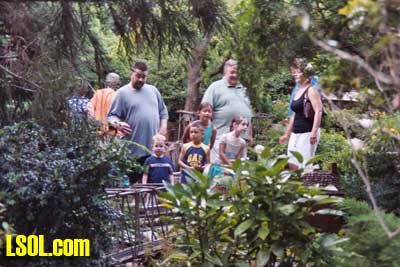
There was the one circle of track that you could see the whole loop that had a kitbashed locomotive on it. It was a Percy locomotive that somebody put a motor block under it and cut out the cab roof and had an engineer sticking out of the roof. I sat on the bench next to the loop and noticed that every kid between 2 and 12 that went past immediately identified it as Percy. Unfortunately the pictures of Percy did not take as the clouds were moving in as the sun set in the west. 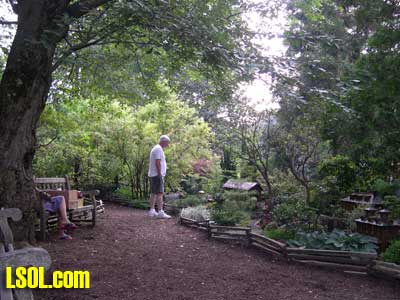 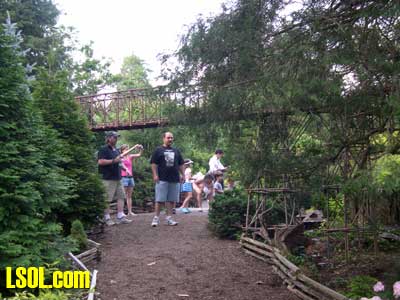
Since it was a "Run What You Brung" evening Percy was removed from the track to let a boy and his mom run his LGB toy train 0-4-0. This caused much consternation among the other boys there. One in particular was quite insistent that Percy did not need a rest. The 0-4-0 did have some problems with the pickup shoes holding the drivers off the track. The guy in charge of the garden took the time to lubricate the binding sliders and soon the train ran fine. However shortly the clouds got to be more threatening and thunder could be heard off in the distance. People started packing up everything and heading for the cars and inside event displays and vendors. There were many different scales set up, displays for the event as well, as an artist selling pictures. Other vendors were selling G scale stuff. All and all, it was a good show and fun to meet more people into Garden railroading. 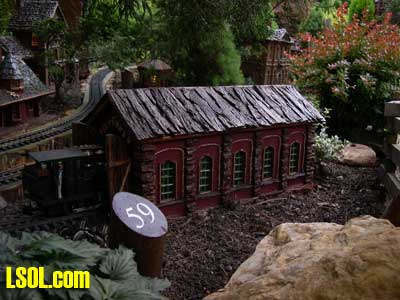 This is where we will put our engine for the night. This is an example of a typical single stall brick engine house with an arched door for one engine. The roof is hickory bark, the doors are Catalpa pods and bamboo. The blocks are elm bark, the window and door header are pine cone scales, and the window sills are cedar. Top of Page
|



